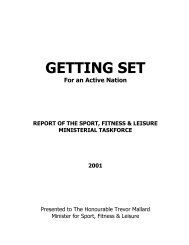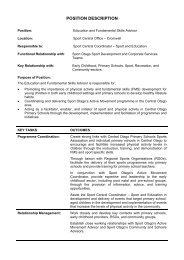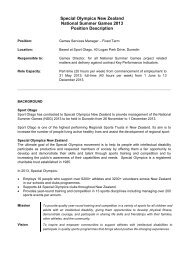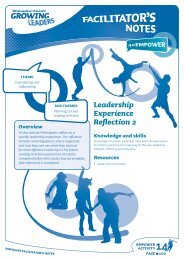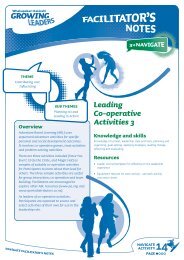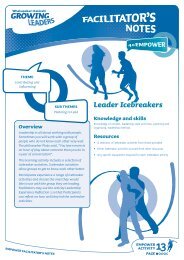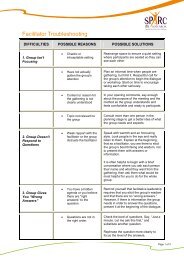An Overview - Sport New Zealand
An Overview - Sport New Zealand
An Overview - Sport New Zealand
You also want an ePaper? Increase the reach of your titles
YUMPU automatically turns print PDFs into web optimized ePapers that Google loves.
10<br />
The market value<br />
of sport and<br />
recreation to the <strong>New</strong><br />
<strong>Zealand</strong> economy is<br />
$5.2 billion<br />
or 2.8% of GDP<br />
The market value of sport and recreation to<br />
the economy<br />
The sport and recreation sector accounts for $5.2 billion or 2.8 per cent of<br />
GDP. This is the market value using a broad definition of the sector. How this<br />
estimate is calculated is explained below and illustrated in Figure 2.<br />
Figure 2<br />
Estimated market value of sport and recreation in <strong>New</strong> <strong>Zealand</strong>, 2008/09<br />
17 <strong>Sport</strong> and<br />
Recreation Industries<br />
$3,844 million<br />
(2.1% of GDP)<br />
Plus $672 million<br />
Physical and Human<br />
Infrastructure<br />
= $4,516 million<br />
(2.4% of GDP)<br />
Plus $728 million<br />
Market Value<br />
of Volunteers<br />
= $5,244 million<br />
(2.8% of GDP)<br />
Plus $ ???<br />
Value of other<br />
industries reliant<br />
on <strong>Sport</strong> and<br />
Recreation activities<br />
(not measured)<br />
Estimated market value is $5,244 million or 2.8% of GDP<br />
The inner oval in Figure 2 shows the value added by 17 industries that<br />
produce goods and services necessary for sport and recreation (see Table 1 in<br />
Section 3). This is the narrowest definition of the sport and recreation sector.<br />
In 2008/09, these industries contributed $3.8 billion or 2.1 per cent to <strong>New</strong><br />
<strong>Zealand</strong>’s GDP.<br />
The second oval includes an additional $672 million from:<br />
(i) incomes of people working in sport and recreation occupations outside<br />
of the 17 industries – for example, a recreation guide employed by a hotel<br />
(hospitality industry);<br />
(ii) investment by central government in sport and recreation education in<br />
schools; and<br />
(iii) local councils’ expenditure on new sport and recreation facilities.<br />
This begins to broaden the definition of the sector and takes the contribution to<br />
$4.5 billion or 2.4 per cent of GDP.<br />
The third oval takes into account volunteered services, which are particularly<br />
important in the sport and recreation sector. The additional $728 million comes<br />
from assigning a volunteer wage rate of $14.19 per hour to the 51.3 million<br />
hours volunteers spend supporting sport and recreation over a year. This takes<br />
the contribution of the sport and recreation sector to $5.2 billion or 2.8 per<br />
cent of GDP (including volunteered services).<br />
These are conservative estimates because the study was not able to find data<br />
to measure everything that the sport and recreation sector contributes to the<br />
economy (for example, from sports broadcasting). This feature of the study is<br />
reflected in the figure’s final oval, for which there is no value at present.



